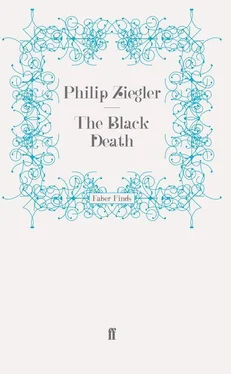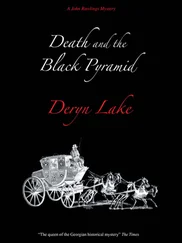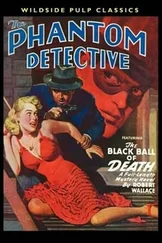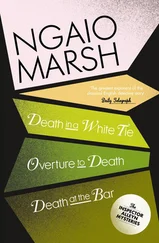* * *
Of this 4.2 million, how many died. ‘Only one in ten survived’, says one chronicler; ‘three quarters perished’, says another; ‘four fifths’, a third. Few estimates fall as low or lower than a half. Such lurid speculations, of course, contain little of interest to the statistician; enough cases have been established where the estimates of the chroniclers were palpably impossible to dispel any lingering belief that the man on the spot knew best But to arrive at a more rational figure is not easy.
One much favoured method is to seek to calculate from the ecclesiastical records the number of the beneficed clergy who died, to establish this as a proportion of the total and then to apply the same or some related percentage to the lay population. It was the application of this technique which led Cardinal Gasquet to claim that fully 50 per cent of the population perished in the two years beginning in July 1348. {415} The imperfections of the method have already been discussed. {416} Cardinal Gasquet himself was led badly astray by such deficiencies and even the more evolved workings of Professor Hamilton Thompson and Dr Lunn leave certain pockets of uncertainty.
Nevertheless studies of this kind can produce interesting and highly relevant results. Hamilton Thompson {417} and Lunn {418} between them have established the mortality rate of beneficed clergy in ten of England’s dioceses. The figures are remarkably consistent, ranging between just under 39 per cent for York and 39.6 per cent for Lichfield to 47.6 per cent for Bath and Wells, 48.5 per cent for Ely and 48.8 per cent for Exeter, Winchester and Norwich. On this basis it is reasonable to assume that something close to 45 per cent of all parish priests died during the plague. Similar statistics based on twelve of the more important monasteries show a surprisingly similar rate among the monks, 44 per cent of whom perished.
But though these figures are undoubtedly relevant to the problem of the total casualties caused by the Black Death, exactly how they should be used is harder to establish. It is as certain as any medieval statistics can be that, for England as a whole, the mortality rate among the people was lower than 45 per cent. Applying the ratio between dead clergy and dead people referred to above {419} one must conclude, on the other hand, that it cannot have been lower than 34 per cent or so – say a third to avoid any false impression of exactitude.
Professor Russell, who found the figures for clerical mortality difficult to reconcile with his own very low estimate for deaths among the whole population, tried to overcome his difficulty not, as might have been expected, by assuming the existence of a larger differential between the two categories but by suggesting that the former figures were incorrect. ‘With some reluctance’, {420} he reached the conclusion that Professor Hamilton Thompson, that ‘careful scholar who knows ecclesiastical practice so well’, had nevertheless been guilty of some fairly elementary blunders. But since the blunders whose presence he suspected were specifically those which Hamilton Thompson had set out to eliminate from the earlier calculations of Cardinal Gasquet, since Lunn has subsequently confirmed Hamilton Thompson’s conclusions and since neither Russell nor anyone else has yet done any work which yields substantially different results, it would seem premature to discard the fruits of their researches. It would be reasonable to say that, if no evidence existed except that of the Ecclesiastical Register, an overall mortality rate among the people of England of at least a third might be expected.
But there is other evidence, and Professor Russell has summarized it faithfully. There is, for instance, the possibility of arriving at an answer through figures for the payment of frankpledge dues. The value of the calculation is limited since it rests on a narrow statistical base of eighty-four case-histories in Essex, but it is worth noting that it gives an overall mortality of 43 per cent. Court Rolls also provide some evidence, though the principal lesson to be learned from them is the wide variation between different areas. In the Farnham manors the loss between 29 September 1348 and September 1350 seems to have been more than 28 per cent but less than 38 per cent, depending on the index figure taken for the ratio between tenants and dependents. {421} A study of the manor of Cuxham in Oxfordshire indicates a death roll of something over two thirds. {422} Similar figures for three manors belonging to Crowland Abbey suggest a rate of 56 per cent. {423} On the other hand, in her analysis based on the Winchester Pipe Roll of eleven widely scattered manors belonging to the Bishop of Winchester, Dr Levett, while venturing no exact figure, could find no evidence to suggest a death rate high enough to disrupt the working of the manors and, in the case of one very large manor, felt that the figure of a third must be over-pessimistic. ‘The general impression gained from an attempt to make any such calculations,’ she concluded dryly, ‘is that they are singularly useless.’ {424}
Finally there are the figures derived from inquisitions post-mortem, to which Professor Russell attaches particular importance. Based upon some five hundred such inquisitions he assumes that some 27.3 per cent of the population died during the plague; a figure which would be reduced to 23.6 per cent if allowance were made for the higher mortality among the older people. While admitting the limitations to this approach he concludes ‘Nevertheless, it presents the best evidence available as yet upon the effects of the plague.’ {425} 23.6 per cent is far lower than any percentage which can be deduced from the other methods of calculation already mentioned. It might, therefore, be expected that it would be the lowest point in the range of possible death rates. But in his final summing up, Russell puts forward a still lower figure of 20 per cent, ‘The reduction of the… loss to 20 per cent’, he comments, ‘proceeds from better calculation of plague losses, which could take into account age specific mortality… discounting of ordinary mortality of the three years…’ {426} Since the 23.6 per cent figure derived from Russell’s favoured inquisitions post-mortem is itself loaded to take account of age specific mortality this further reduction is hard to accept.
It will be obvious from all this that to draw any conclusion must be hazardous. Little more than an informed guess is possible. It can safely be assumed that a figure of 45 per cent, equivalent to the figure of mortality among the clergy, would be the highest point of any possible bracket. Pace Russell, it seems incredible that the figure could be less than the 23 per cent which he suggested as the adjusted total derived from inquisitions post-mortem. A half-way point between these two poles would suggest a death rate of roughly a third. This would accord reasonably well with the evidence of the ecclesiastical registers. It is conspicuously lower than the figure derived from the payment of frankpledge dues or than most of the manors for which precise statistics happen to be available but these latter totals are not adjusted to take account of natural death. It is anyhow not unreasonable to expect that dramatically bad news would be recorded more enthusiastically than the humdrum figures of the luckier manors.
As a rough and ready rule-of-thumb, therefore, the statement that a third of the population died of the Black Death should not be too misleading. The figure might quite easily be as high as 40 per cent or as low as 30 per cent; it could conceivably be as high as 45 per cent or as low as 23 per cent. But these are surely the outside limits. On this basis the approximate total for the dead in England would be 1.4 million. No figure above one million and below 1.8 million would be astonishing but the nearer that the actual figure approached the median, the more it would seem to accord with the existing evidence.
Читать дальше












